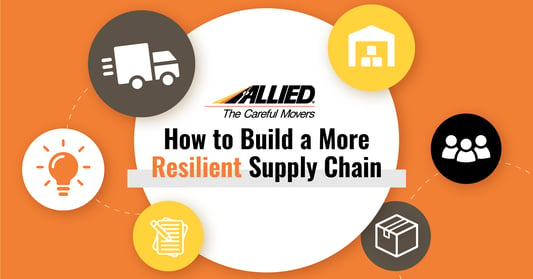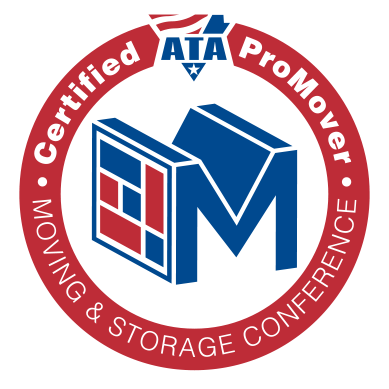
From food to automotive to health care, COVID-19 has caused enormous upheaval and disruption to supply chains across industries. Lengthy delays, order cancellations and increased costs have been just some of the effects of the global pandemic, which caught companies around the world unaware — in fact, an EY survey of senior-level supply chain executives found that only 2% of respondents said their company was fully prepared for the pandemic. Meanwhile, new strains and surges are continuing to cause disruption.
The continuing effects of COVID-19 have highlighted the importance of building a resilient supply chain, one that can adapt to and overcome unexpected challenges. An article in Brookings TechStream says, “Companies and governments alike are realizing that efficiency at the expense of resilience cannot be the sole criterion around which supply chains are designed.”
But how can you promote that flexibility and robustness? Here are five important steps your company can follow to build a more resilient supply chain.
Identify Risks
Taking the time to assess your current situation can give your organization a strong starting point. Mapping your supply chain can help you better evaluate your suppliers and identify areas of potential risk. It’s also important to update this map regularly, adding or removing suppliers as necessary. By identifying both external and internal risks, you can create a plan and take steps to strengthen your supply chain. External risks include things like environmental or demand risks, while internal risks include manufacture and mitigation and contingency risks.
While identifying risks, it can also be a good idea to think through future events of what-if scenarios that could cause significant disruptions. From there, you can mitigate risk by planning ahead for an unforeseen event. Supply Chain Dive, for example, says, “An increase in inventory and safety stock, and some slack in lead times and production schedules, allows for a reasonable buffer to offset supply interruptions and maintain some level of customer service.”
Leverage Direct Relationships
Establishing strong supplier relationships is critical to a successful supply chain and can help increase resilience and flexibility. When you take the time to build connections with your point of contact, you create a direct connection and a more personal relationship. That can be a powerful benefit when your company has to navigate challenging or unexpected circumstances.
When something goes awry or needs to be addressed, you not only know who to get in touch with but you’ve also built the foundation for collaboration. By leveraging the direct relationships you’ve created, your company can be in a better place to respond to challenges and unexpected circumstances.
Rethink Strategies for Sourcing
Although it may seem like a good way to meet a cost target, relying on a single source can be a major risk. Instead, to build resilience into your supply chain, Gartner suggests turning to multisourcing, or working with multiple suppliers. Multisourcing provides layers of resilience and provides your company with more flexibility during unforeseen circumstances.
“To craft a multisourcing strategy,” Gartner says, “supply chain leaders must know their supplier networks in detail and be able to categorize suppliers not just by spend, but also by revenue impact if a disruptive event occurs.”
By not being dependent on a single supplier, you can avoid significant delays if that vendor is unable to fulfill an order. But if you are dependent on a sole supplier, Supply Chain Dive says you can “mitigate the risk through additional inventory, until a sourcing action reduces the risk.”
Increase Transparency
Another way to increase supply chain resiliency? Boost supply chain transparency. This can help make data more readily available, connect multiple parties and lead to clear communication. That transparency can translate into a better ability to predict events and even increase trust among your customer base.
As an article from IBM puts it, “With a better understanding of the relationships between suppliers, it’s easier to plan for future disruptions, incorporate risk management into operations strategies, make processes more sustainable and ultimately support your organization’s goals.”
Be Flexible and Adaptable
The ability to quickly adjust is essential to having a resilient supply chain, and by adapting to market changes, you can position your company for success. One way to more easily identify and respond to new changes? Moving to a continuous review process. SupplyChain247 says shifting away from periodic reviews can not only help a company stay aware of market changes, but it also “helps organizations anticipate disruptions and prepare for them.”
Creating a resilient supply chain isn’t a simple fix, and the process may not always allow for peak efficiency. But the benefits are substantial, and as we’ve seen with the COVID-19 pandemic, resiliency is essential for continued success.
If you’re searching for a partner to support your corporate relocation and office move needs, Allied Van Lines has a vast agency network that helps us exceed our customers’ expectations. And when you engage us as a supplier, you can count on quality, consistency, and downline visibility under one contract for all your workplace and workforce mobility needs.
Allied Van Lines, The Careful Movers, supports local, long-distance and international moves — large and small — and is the largest mover network in the world. With over 90 years of experience, we’re here when you need us to ensure your company and your top talent move forward into the future, together. Learn more.


![shield [Converted] susan](https://corporate.allied.com/hubfs/susan.png)
![shield [Converted] move](https://corporate.allied.com/hubfs/move.png)

